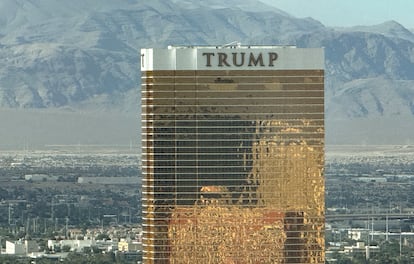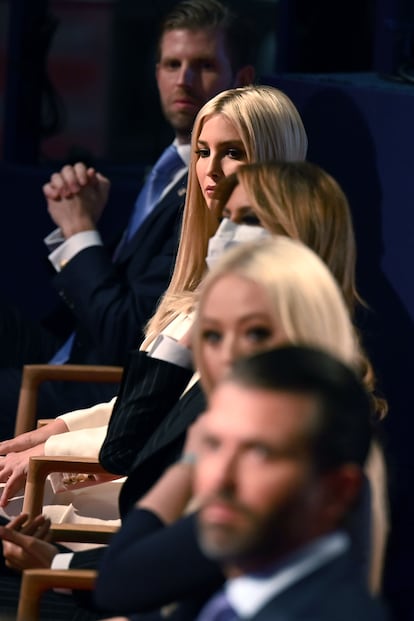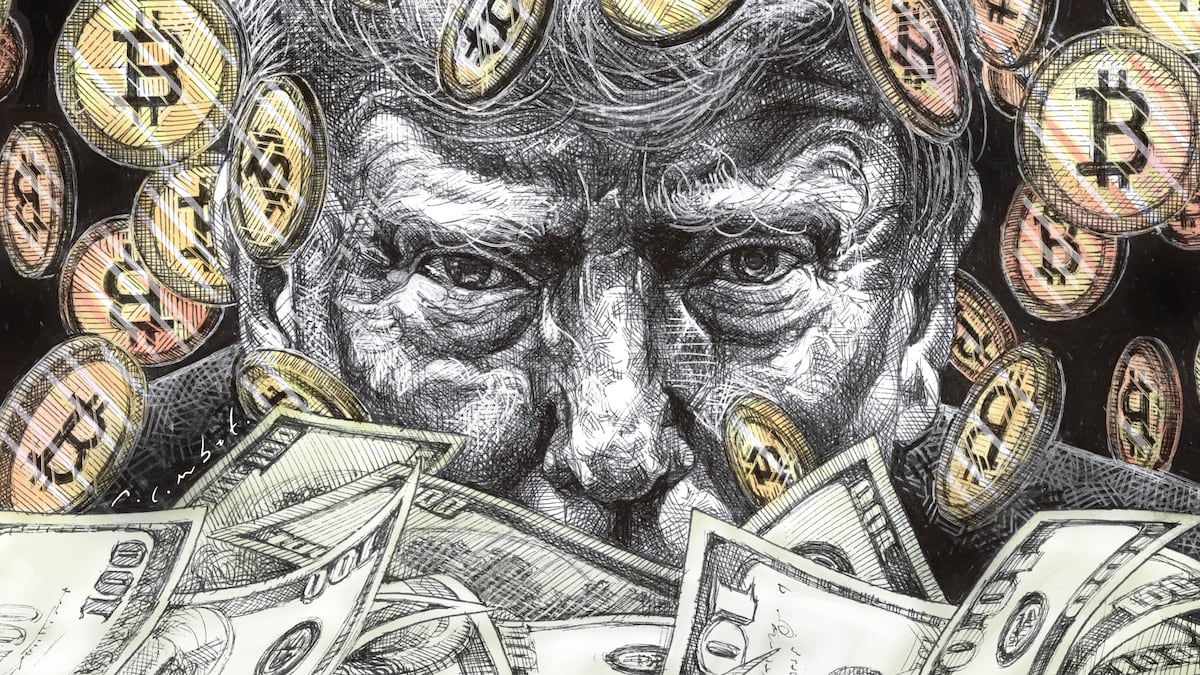In 1996, journalist Mark Singer was assigned by The New Yorker, where he had worked for 20 years, to shadow Donald Trump for several months and produce an in-depth profile of the then media-savvy U.S. businessman. Singer wrote what became one of the magazine’s legendary pieces — a sharp portrait concluding that the tycoon had achieved “the ultimate luxury: an existence unmolested by the rumbling of a soul.”
In 2005, Singer republished the article in a book compiling nine of his best recent profiles, which received a glowing review from The New York Times. Trump responded by sending the newspaper a letter calling Singer a “loser” along with other insults — publicity that actually boosted the book’s sales.
With all the irony in the world, Singer decided to thank Trump by sending him a check for $37.82 as a token of appreciation. A few days later, Trump’s company returned the letter with another insult from the future president — but the journalist’s bank account soon showed a debit of $37.82. Trump had cashed the check.
There are many stories that illustrate Donald Trump’s business instincts, but none captures his essence quite like this one: a feverish, passionate, and enduring love of money, passed down from generation to generation. From Fred Trump — his father, a housing developer in Queens and Brooklyn who used to motivate his son with lines like “Be a killer” and “You’re a king” — to Trump himself, and on to his children, such as Ivanka, with her own ventures, and Donald Jr. and Eric, who run the family empire.
The gene has already appeared in the next generation. Even Trump’s granddaughter Kai Trump, 18, has started selling sweatshirts with her initials for $130, promoted with photos taken in the White House gardens — yet another potential conflict of interest during this presidency. On her website, the young entrepreneur emphasizes that the clothes are “made by skilled American workers,” in case anyone went looking for a Made in China tag.
Donald Trump isn’t the first U.S. president to come from the business world, but there’s no precedent for one whose fortune has grown so much during his presidency, largely thanks to — as his critics rightly argue — the power and visibility of the presidential brand itself. Amid the noise of trade wars, misinformation about paracetamol use during pregnancy, and even the Gaza peace deal, the Trump conglomerate is making money — money for itself — by the bucketload.
Trump 2.0
The Donald Trump of the first term (2017–2021) was the famous real estate mogul: owner of hotels, resorts, golf clubs, and residential buildings around the world. He generated revenue by putting the Trump brand on countless products and was not averse to making a few dollars from books or television.
Trump 2.0 is far more diversified: in addition to a growing real estate portfolio, he runs his own social network, Truth Social, under Trump Media & Technology Group, and a new booming crypto venture with his own memecoin — highly volatile, newly minted cryptocurrencies with no underlying value. He launched $TRUMP last January, just two days before taking office, and its value briefly reached $40,000, at least on paper.
How much has Trump’s fortune grown since becoming the world’s most powerful leader? According to Forbes, between 2024 and 2025 the businessman-president’s wealth soared from $2.3 billion to $7.2 billion, a jump largely attributed to his new ventures. The New York Times, however, estimated last July that his total net worth was around $10 billion, much of it in illiquid assets (hard to convert into cash). Bloomberg’s Billionaires Index, the world’s largest financial database, estimated this summer that his wealth has more than doubled during his presidency, reaching $6.4 billion.
 A view of the Trump Hotel in Las Vegas, Nevada, in an image taken on July 3.DANIEL SLIM (AFP / GETTY IMAGES)
A view of the Trump Hotel in Las Vegas, Nevada, in an image taken on July 3.DANIEL SLIM (AFP / GETTY IMAGES)
It’s impossible to determine Trump’s exact net worth because, first, not all his businesses are publicly traded, and second, most of his assets remain in real estate, often shared with family and partners. Much of the wealth generated by his crypto ventures is tied to his personal brand, making it difficult to assign a standalone value. Other income comes from book licenses and branded products. Adding to the uncertainty, Trump has been accused multiple times of inflating asset values to secure easier credit — a matter that even reached the courts, though he was cleared.
What is clear from his first presidency is that the business engine has been running at full speed. When he first entered the White House, he announced he would step back from managing his companies and place them in a trust, meaning someone else would oversee them. Unlike Jimmy Carter, who handed his agricultural business to an independent manager, Trump’s conglomerate is run by Donald Jr. as lead manager and Eric, both of whom remain in constant contact with their father. They also help promote the political MAGA brand and inaugurate new buildings alongside him.
As a lawyer specializing in governance and ethics — who prefers to remain anonymous due to his current work at a private firm — points out, “to avoid any accusations of inappropriate conduct, what he should have done is divest himself of all his businesses in the United States and abroad, but that’s not going to happen. In fact, he is expanding both domestically and internationally.”
Trump’s children have always maintained that they have spent their entire lives in the world of business and investment, that they are not upstarts looking to make money from scratch in the heat of their father’s election, and that it would not make sense for them to give up their business careers now.
The Trump family’s core business — luxury real estate, hotels, golf courses, and other commercial or residential properties managed through Trump Organization — exemplifies the combination of immense political power with ongoing family business operations. For example, at the end of July, Trump traveled privately to his Scottish golf courses, where he met with U.K. Prime Minister Keir Starmer and European Commission President Ursula von der Leyen. To top things off, he inaugurated a new golf course with his two sons, alongside Scottish First Minister John Swinney.
Between golf courses, resorts, and buildings for various uses, Trump owns nearly 20 major real estate holdings. These include iconic locations such as Mar-a-Lago in Florida, Trump Tower on New York’s Fifth Avenue, and the Scottish golf courses. Forbes values them at around $2.5 billion, though this figure, once again, is subject to many caveats. For example, New York prosecutors noted that Trump bought a golf course in Jupiter, Florida, for $5 million, yet declared it worth $62 million less than a year later in his 2013 tax filings.
Influx of petrodollars
On top of the value of his assets, there is also the annual income generated by these businesses, which has also been a source of controversy in both this term and the previous one, since Trump’s choice to stay in his own hotels and resorts in the United States forced his large entourage to do the same, using taxpayer money. Added to this is the fact that many millionaires pay to join these very clubs with the aim of gaining access to the president.
In the real estate business, a flow of petrodollars is now coming in, as the president’s children have expanded activity in the Persian Gulf. The group has reached several multimillion-dollar agreements with Saudi developer Dar Global, the latest, worth $1 billion, to develop a residential and office project in the city of Jeddah. The Trump Organization has also closed licensing deals with Dar Global for other projects in Dubai, Oman, Qatar, and Riyadh. Several of these deals were arranged after the president’s trips to the region.
During his first term, Trump pledged not to launch new projects outside the United States in order to avoid suspicion or the possibility that a foreign power could try to benefit his businesses in exchange for influence over the president. Now, the conglomerate is seeking to make money abroad, although it avoids carrying out projects with governments.
Setting ethics and public image aside, the lawsuits Trump faced during his first term have largely gone nowhere in the courts. U.S. laws on conflicts of interest do not apply to the president in the same way they do to other public officials. There is a provision in the U.S. Constitution, dating back to the 18th century, that prohibits the president or any other administration official from accepting gifts or donations from foreign governments without the express consent of Congress, but Trump has defied this rule by accepting a luxury Boeing 747 jet from Qatar valued at $400 million, which he will use as the presidential plane, a new Air Force One.
Although buildings represent the longest-standing sector in Trump’s investment portfolio, and the one where he most imprints his personal stamp (grandeur, luxury, and his name in large letters), the crypto universe has become an empire in just a few months and deserves a whole separate chapter. If the aforementioned $TRUMP memecoin traded at $7.48 last week, the total value of this currency can be calculated at $1.4 billion, according to CoinMarketCap, although, of course, it is not owned by the magnate himself.
New horizons
The Trumps operate in this volatile market through World Liberty Financial, a platform founded by the president’s children — including the youngest, Barron Trump, already wealthy at 19 — along with other investors such as Steven Witkiff, Zac Folkman, and Chase Herro, whom the U.S. press calls “crypto punks.” The platform itself has also launched its own digital token, $WLFI, which traded at $0.17 last week, giving it a total market value of $4.34 billion.
The crypto business has drawn particular attention from the Democratic opposition. State Democracy Defenders Fund, an opposition platform, has closely monitored Trump’s activities in the sector because they coincide with an openly “crypto-friendly” approach to this high-risk, highly volatile financial asset. According to their calculations, by mid-March, these assets already represented $2.9 billion for Trump, or 37% of his total fortune.
“Rather than divest his crypto assets to avoid any possible conflict of interest, President Trump seems to have positioned himself to maximise profiting from them by adopting a less aggressive regulatory and enforcement programme than his predecessor,” according to Virginia Canter, head of the anti-corruption practice at the group. “Reduced oversight could undermine U.S. national security interests,” she added in a statement.
The story of Trump Media & Technology Group also illustrates the president’s indomitable drive. In January 2021, following the Capitol attack, Twitter (then led by Jack Dorsey, now X, owned by Elon Musk) permanently suspended Trump’s account. In response, Trump began working on the launch of his own social network to avoid what he saw as establishment censorship. Truth Social launched in October of that year. The publicly traded company has a market capitalization of $4.78 billion as of last week, and according to The New York Times in July, Trump controlled 115 million shares, worth today about $2 billion. However, these assets are so closely tied to his personal brand that it is difficult to assess whether their value would hold if he divested.
Trump eventually returned to what is now X, owned by Elon Musk. His relations with the Tesla founder — although Musk has since left the administration — have also sparked widespread criticism. In a striking mix of business, politics, and government, last March Trump showcased five Tesla electric vehicles to the press alongside Musk as a show of support. At the time, Musk was seeing his company’s stock fall amid the political whirlwind surrounding his role as head of the Department of Government Efficiency (DOGE), tasked with slimming down the administration and laying off tens of thousands of federal employees.
“I think he’s been treated very unfairly by a very small group of people. I just want people to know that you can’t be penalized for being a patriot, and he’s a great patriot. And he’s also done an incredible job with Tesla,” Trump said at the event, shortly before announcing his intention to buy one of the cars.
 First Lady Melania Trump flanked by the president’s children Eric and Ivanka (top) and Tiffany and Donald Jr. (bottom) in Ohio, USA, in 2020.JIM WATSON (AFP / GETTY IMAGES)
First Lady Melania Trump flanked by the president’s children Eric and Ivanka (top) and Tiffany and Donald Jr. (bottom) in Ohio, USA, in 2020.JIM WATSON (AFP / GETTY IMAGES)
Trump family businesses flourish, not just from the sweatshirts his granddaughter has started selling. Ivanka’s husband, Jared Kushner, also a businessman, has played a key role, for example, in the mega-deal for the purchase of Electronic Arts, the company behind FIFA and The Sims, by the U.S. private equity firm Silver Lake and Saudi Arabia’s sovereign wealth fund (Public Investment Fund, PIF). According to The Wall Street Journal, Trump’s son-in-law used his connections in Saudi Arabia to help facilitate the deal.
Meanwhile, Amazon paid $40 million for the rights to a documentary about Melania Trump, one of the more discreet First Ladies in U.S. history. Her husband has never shied away from audiovisual ventures — on the contrary, they generated substantial income and placed his image in millions of American homes, notably as host of the reality show The Apprentice, which became a key ingredient of his political success.
At the same time, sales of licensed products under the Trump brand — from the famous MAGA caps to various clothing lines (one of the latest titled “Gulf of America,” in reference to the renamed the Gulf of Mexico) or sneakers — continue to generate royalty income.
Trump Organization describes its patriarch as “the very definition of the American success story […] He is the archetypal businessman — a deal maker without peer.” On the website, one of Trump’s favorite sayings is featured — one he has used for decades, though it’s hard to imagine he anticipated its relevance in this unusual 2025. “You have to think anyway, so why not think big.”
Sign up for our weekly newsletter to get more English-language news coverage from EL PAÍS USA Edition
